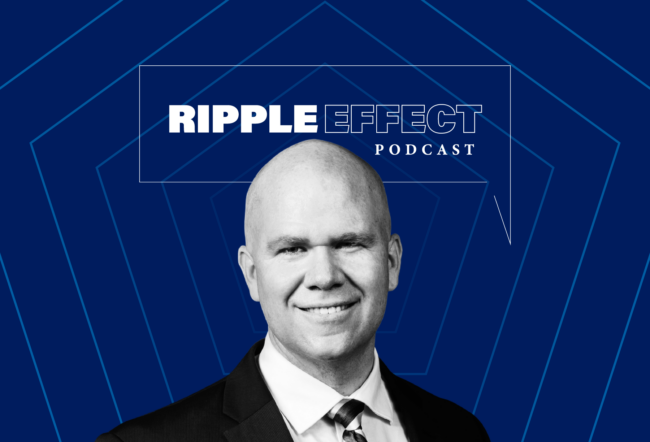Two books published 150 years apart espoused two sharply different views of crowds. Charles Mackay’s 19th century tome, Extraordinary Popular Delusions and the Madness of Crowds, points to the irrationality of the masses as seen in various investment bubbles like the Dutch “tulip mania” in 1637. But James Surowiecki, in his 2004 book The Wisdom of Crowds, says quite the opposite. He believes that when people work together, it leads to a better outcome. Wikipedia is an example of the hive mind’s potential — academic studies show that it compares favorably to expert-created content.
So are crowds wise – or mad? Wharton professor Ethan Mollick looks at this very issue in his research paper, “Wisdom or Madness? Comparing Crowds with Expert Evaluation in Funding the Arts,” co-written by Harvard Business School professor Ramana Nanda. The paper compares the artistic judgement of the masses to those of experts to see how far apart they were in taste. The authors looked at 120 theatrical projects seeking financial backing through the crowdfunding site Kickstarter over a three-year period.
What they discovered was that the crowds and experts were remarkably aligned in what they would support. “On average, we find a remarkable degree of convergence between the realized funding decisions by crowds and the evaluation of those same projects by experts,” they wrote. “Projects that were funded by the crowds received consistently higher scores from experts … and were much more likely to have received funding from the experts.” So the crowd is more often wise than it is mad, in this setting.
Knowledge at Wharton recently sat down with Mollick to talk about the paper’s findings.
An edited transcript of the conversation follows.
Knowledge at Wharton: Tell us what the paper is all about.
Ethan Mollick: In this paper, “Wisdom or Madness,” we’re trying to resolve an interesting puzzle that has arisen recently: As of about 2012, according to some measures, more money goes to the arts through Kickstarter, the crowdfunding site, than the National Endowment for the Arts, the major government organization that gives money to the arts. This raised the big question: What does that mean? Does that mean we get more good art, more bad art? Does more art get funded? What happens when you switch from a pure expert-based system to also having crowds involved?
Knowledge at Wharton: What are your paper’s key takeaways?
Mollick: [Ramana Nanda] and I worked to get a group of professional judges — people who judged things like the National Endowment for the Arts, or who acted as expert critics or helped judge prestigious theater awards — and we asked them to evaluate Kickstarter projects to see whether or not their choices would agree with the ones that were funded by the crowd.
What we found were a few interesting things. First of all, the crowd and the experts generally agreed. We thought at first there might be a big gap between what the experts liked and what the crowd liked. It turns out there wasn’t. They were very similar. And where they disagreed with each other, the vast majority of the times it was because the crowd was willing to fund projects that the experts were not willing to. So, the crowd actually funded more art and had a lower threshold.
When we followed up on these projects afterwards, it appeared that those funded by the crowd were slightly more likely to fail, but also appeared to be more likely to actually achieve giant success – such as winning prestigious theater awards or running off-Broadway. The crowd actually seemed to do a pretty good job of selecting high variance projects — those that succeeded by a large amount or else failed.
Knowledge at Wharton: Which conclusions, if any, surprised you?
Mollick: When I think about what we were trying to measure here, it was answering a question that was posed by two books that were published more than a hundred years apart.
In the 1800s, there was a book called Extraordinary Popular Delusions and the Madness of Crowds. It tried to look at things like tulip mania in Holland or Ponzi schemes and tried to understand why crowds were so often crazy. In 2004, James Surowiecki published a book called The Wisdom of Crowds, all about how crowd markets are smarter than individuals and how we should do group-based decision making.
These are two interesting ideas contrasting with each other. On the one hand, you have the belief that crowds are inherently crazy, and they suffer from madness. They run after interesting ideas. In theater, you might think this could occur and several of our experts did think it would happen: The crowd would tend to fund musicals about happy Internet dancing cats, or about bacon, the kinds of things the Internet likes.
“We thought … there might be a big gap between what the experts liked and what the crowd liked. It turns out there wasn’t.”
On the other hand, you have this idea that crowds are actually wise, and collectively they’re actually smarter than individuals. They make great decisions, and often better decisions, than experts. What I think was interesting to us was that we found a lot more support for the wise crowd than the mad crowd, even in this area which is so subjective like theater.
Knowledge at Wharton: What are some practical implications of your findings?
Mollick: More and more, decisions that used to be in the hands of experts are also being put in the hands of online communities. You could think about crowdfunding and how it’s replacing expert judgment in theater or how it’s replacing venture capital in some cases. There’s the idea of crowd science and crowdsourcing. There’s a whole bunch of things that experts used to do … and now we’ve thrown it to communities to help us solve.
We don’t know a lot about when communities are better than experts and when they’re the same. One of the interesting findings here is, in this very subjective field of theater, where you really expect a huge high culture and low culture difference — the things that a theater snob would like would be very different than what the mass market would like — even in this case, it seems like the crowd has value in adding to decisions. It helps lower barriers and democratize access. It’s a really important point that would probably apply even more in other specialized fields.
Knowledge at Wharton: What sets your research apart from prior work in this area?
Mollick: What’s actually interesting is despite this famous book on the wisdom of crowds, most of the work on why crowds are smart or not has tended to revolve around expert markets, where you have experts making decisions. There’s been some really interesting work … looking at things like Wikipedia and finding that Wikipedia is smart, but it’s a remarkably under-researched field.
Crowdfunding is relatively new; there’s relatively little work on that. And this whole idea of testing wisdom and madness is relatively novel. It’s a first step to try and understand this increasingly important phenomenon.
“More and more, decisions that used to be in the hands of experts are also being put in the hands of online communities.”
Knowledge at Wharton: How will you follow-up this research?
Mollick: I’m really interested in crowds in general — how Internet communities operate and how we can make them work better. What expert and standard organizations could they substitute for? We still have many questions. The Internet is a relatively new phenomenon in academic terms. We’re still grappling with, ‘What does it do?’ What does it enable that we couldn’t do before? How could companies use it? How could governments use it? How could individuals participate in these environments in a way to make a difference? How do we stop negative behavior? There’s a lot of interesting questions and I’m really excited to try and dig into them.



